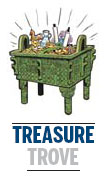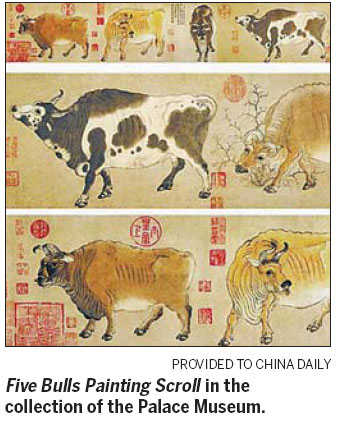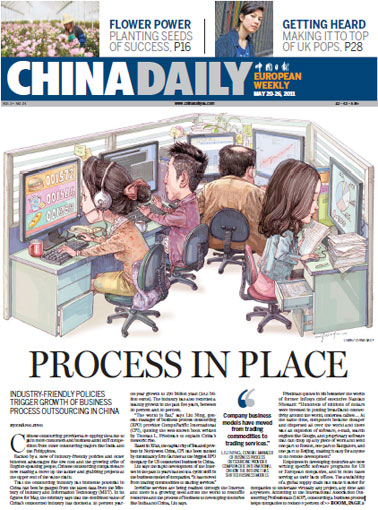View
The five bulls that were saved in the nick of time
Updated: 2011-05-17 07:52
By Cheng Anqi (China Daily)
EDITOR's Note: Every week we look at a work of art or a cultural relic that puts the spotlight on China's heritage.
One midnight in late spring, 1951, a telegraph machine whirred into action, its dit-dit, da-da, punctuating the silence of a British-style building in Hong Kong.
A telegraph operator promptly put the telegram into an envelope and sealed it, before leaving the building.
It was from then premier Zhou Enlai (1898-1976) and was intended for a Hong Kong businessman, conveying this message: "Save the national treasure at any cost".
 |
The telegram followed a letter to premier Zhou from the patriotic businessman, who informed him that the famed Five Bulls Painting Scroll, long thought lost, was to go under the hammer in Hong Kong for an estimated HK$100,000 ($12,880) .
The legendary painting is believed to be the only existing piece of art by Han Huang (AD 723-787), a Tang Dynasty (AD 618-907) figure, who studied painting and calligraphy in his leisure time but achieved admirable artistry.
It is said to be the only known Chinese ink art painting done on flaxen paper and the earliest paper-scroll ink painting to depict bulls.
About 140 cm long, and 21 cm wide, the scroll features five bulls, each with a distinctive look, standing in line.
The middle one looks up, another sticks out its tongue while looking back. One seems to be in deep meditation, another is walking forward, while the rightmost is grazing.
According to Pan Shenliang, senior researcher at the Palace Museum, the picture is a fine example of freehand brushwork.
Although the artist's sketches employ simple lines, they capture the powerful physique of the bulls to suggest their slow, plodding movements. Even the fine hairs near the nose are clearly delineated. The meticulous rendering of the eyes reflects the animal's docile but stubborn character.
It is believed Han used to sketch in open fields and was quite pleased with the initial results. But when he proudly showed one of his sketches to a shepherd, the young boy burst out laughing.
"In all my years as a shepherd, I have always seen these animals with their tails between their legs. But in your painting, the tail is up in the air," the boy said.
A chastened Han then began to observe the animals more closely and eventually came up with the classic Five Bulls Painting Scroll.
It soon began to be coveted by collectors and royalty. They recorded their ownership of this painting by putting their signatures and seals on it.
In 1900, the allied armies of Great Britain and France stormed into the Forbidden City where the Five Bulls Painting Scroll was housed.
The painting disappeared - until 1951.
After negotiations with the painting's owner, the central government purchased it and brought it back to the mainland. It is now in the collection of the Palace Museum.
China Daily

E-paper

Thawing out
After a deep freeze in sales during the recession, China’s air conditioner makers are bouncing back
Cool Iron lady
Of good and evil
Build on security initiatives
Specials

Memory lanes
Shanghai’s historic ALLEYS not just unique architecture but a way of life

Great expectations
Hong Kong-born singer songwriter rises to the top of the UK pops.

A diplomat of character
Belgian envoy draws on personal fascination to help build China ties.
